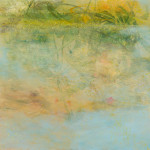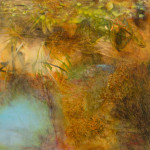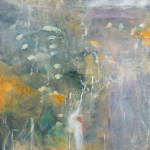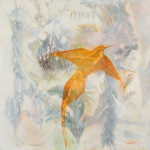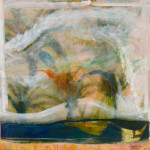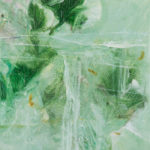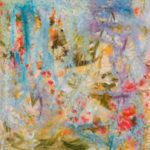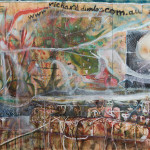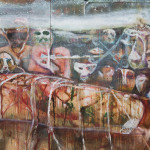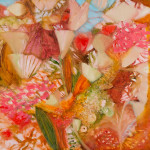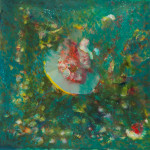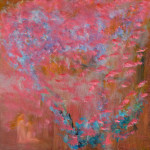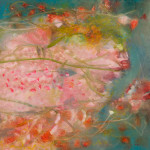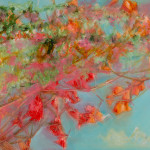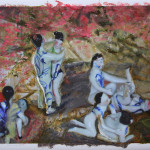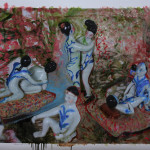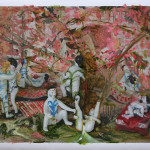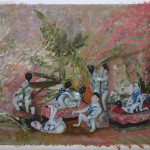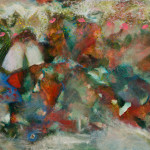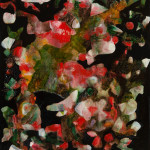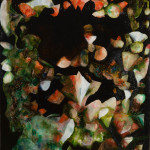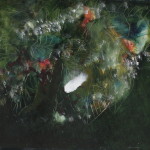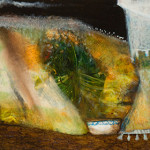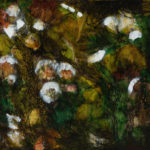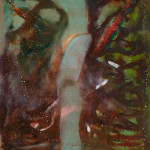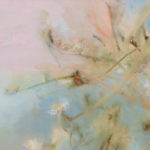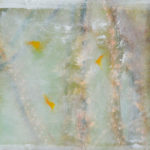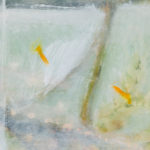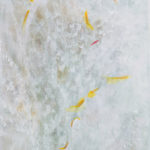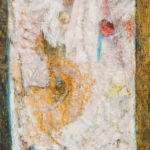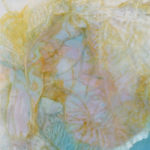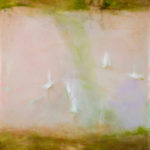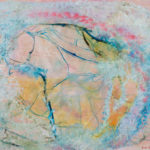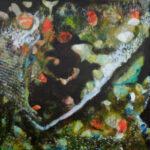- 2010-2015 oil on Belgian linen 152 x 152cm (overall 152 x 334cm, separated by 30cm), Set $42,000
- 2010-2015 oil on Belgian linen 152 x 152cm (overall 152 x 334cm, separated by 30cm), Set $42,000
- 2014-2015 oil on Belgian linen 152 x 152cm, $24,000
- 2010-2015 oil on Belgian linen 160 x 160cm, $24,000
- 2012-2015 oil on Belgian linen 160 x 160cm, $24,000
- 2015 oil and acrylic on Belgian linen in hand gilded frame 67 x 66cm, $7,500
- 2015 oil on Belgian linen 140 x 140cm, Sold
- 2014-2015 oil on wood and canvas 2.4 x 3.6m, Promised future donation to Getty Museum, USA
- 2014-2015 (detail of overall artwork 2.4 x 3.6m oil on wood and canvas), Promised future donation to Getty Museum, USA
- 2015 oil on Belgian linen 140 x 140cm, Sold
- 2015 oil on Belgian linen 152 x 152cm, Sold
- 2015 oil on linen 60 x 60cm, Sold
- 2015 oil on Belgian linen 140 x 140cm, Sold
- 2015 oil on linen 60 x 120cm, Sold
- 2015, oil on artist photograph, unique, framed at 70 x 100cm, Sold
- 2015, oil on artist photograph, unique, framed at 70 x 100cm, Sold
- 2015, oil on artist photograph, unique, framed at 70 x 100cm, Sold
- 2015, oil on artist photograph, unique, framed 70 x 100cm, Sold
- 2015 oil on Belgian linen 90 x 180cm, Sold
- 2014-2015 oil on Belgian linen 152.5 x 122cm, Sold
- 2014-2015 oil on canvas 150.5 x 122cm (destroyed unfortunately)
- 2015 oil on panel 30 x 30cm, Sold
- 2015 oil on canvas triptych 60 x 270cm Sold
- 2015 oil on linen 90 x 90cm, Sold
- 2015 oil on canvas 150 x 110cm, Sold
- 2015 oil and acrylic on linen in hand gilded frame 59 x 59cm, Sold
- 2015 oil and acrylic on linen in hand gilded frame 50 x 54cm, Sold
- 2015 oil and acrylic on linen in hand gilded frame 50.5 x 43cm, Sold
- 2015 oil and acrylic on Belgian linen in hand gilded frame 126 x 69cm, Sold
- 2015 oil and graphite on board 120 x 90cm, Sold
- 2015 oil on canvas 150 x 110cm, Sold
- 2015 oil on canvas 150 x 130cm, Sold
- 2015 oil on Belgian linen 120 x 150cm, Sold
- 2015 oil on Belgian linen 122 x 122cm, Sold
“Powerfully, even poignantly themselves as these objects may be – utterly present as phenomena of the known world – they seem endowed at the same time with the status of emissaries from another more ‘real’ one, which we recognise but could not name. It is in this sense that they might be said to approach the sublime. But to put it in those terms we must intend by “sublime” what lies mysteriously beyond the limits, beyond the threshold of what we can grasp, of where we have actually been – though not where, in moments of delight and enlightenment, the awakened spirit may take us.” – David Malouf, Being There, 2015 (quoted with the kind permission of the author, 2015)
“His luminous botanical paintings juxtapose then meld the traditions of both East and West to present us with an overwhelming fecundity of nature’s beauty. This master of seduction plays at the intersection of conventions of poetry, landscape and still life to create a luminal space for the imagination. This allows the viewer to invest Dunlop’s works with his or her own interpretations of life, death and immortality.” – Dr Christine Dauber, University of Queensland, 2015
“Richard Dunlop has had a successful career as a contemporary artist for a sustained period of more than twenty years. In this time, he has been at the forefront of painting’s resurgence in popularity and appeal, and has never been shy of breaking with established art conventions, such as his blending of elements from botanical illustration with still life and landscape traditions.” – Eric Nash, Perc Tucker Gallery 2015
“It sometimes haunts younger artists when you tell them that in the 444 days that van Gogh spent in Arles before he committed suicide at 37, and where he cut off part of his ear, he did 200 paintings, 200 watercolours and wrote 200 letters in three languages… especially when you ask them what they’ve been doing in the last fifteen months.” – Elwynn Lynn, September 14 1985
“He is one of the few Australian painters whose work it is actually worth standing in front of for more than a few seconds, in order to decipher the processes that put it together, the artistic judgements and intuitions that are to be seen in the sudden decision to use a particular dab of colour or correct a stream of falling paint.” – Sound advice on how to look at a painting by Rex Butler, referring to Ian Fairweather
“Dunlop understands that completely lifting his thoughts on any overtly political or moralistic issues would undermine their power, inhibit the sheer joy of seeing how he can make paint dance, flow and achieve enviable luminosity. Herein lies the genius, as it is the joy of viewing the painting that enables escapism. It creates a prolonged engagement for the audience to view his paintings with the sensitivity and consideration with which they were crafted.” – Eric Nash Curator CCP
“Painting is not something that must be understood. If the picture is for you, it will produce an almost physical sensation, something of joy, of wonder – a tug to the gut. Don’t go trying to understand it. Don’t expect the painter to stand and deliver his innermost convictions in other than his work.” – Ian Fairweather
“Much of the beauty of the art of painting…lies in the microstructure of the brush marks themselves, the evident thinking and feeling in the way the artist has negotiated forms, transitions and edges.” – Christopher Allen
